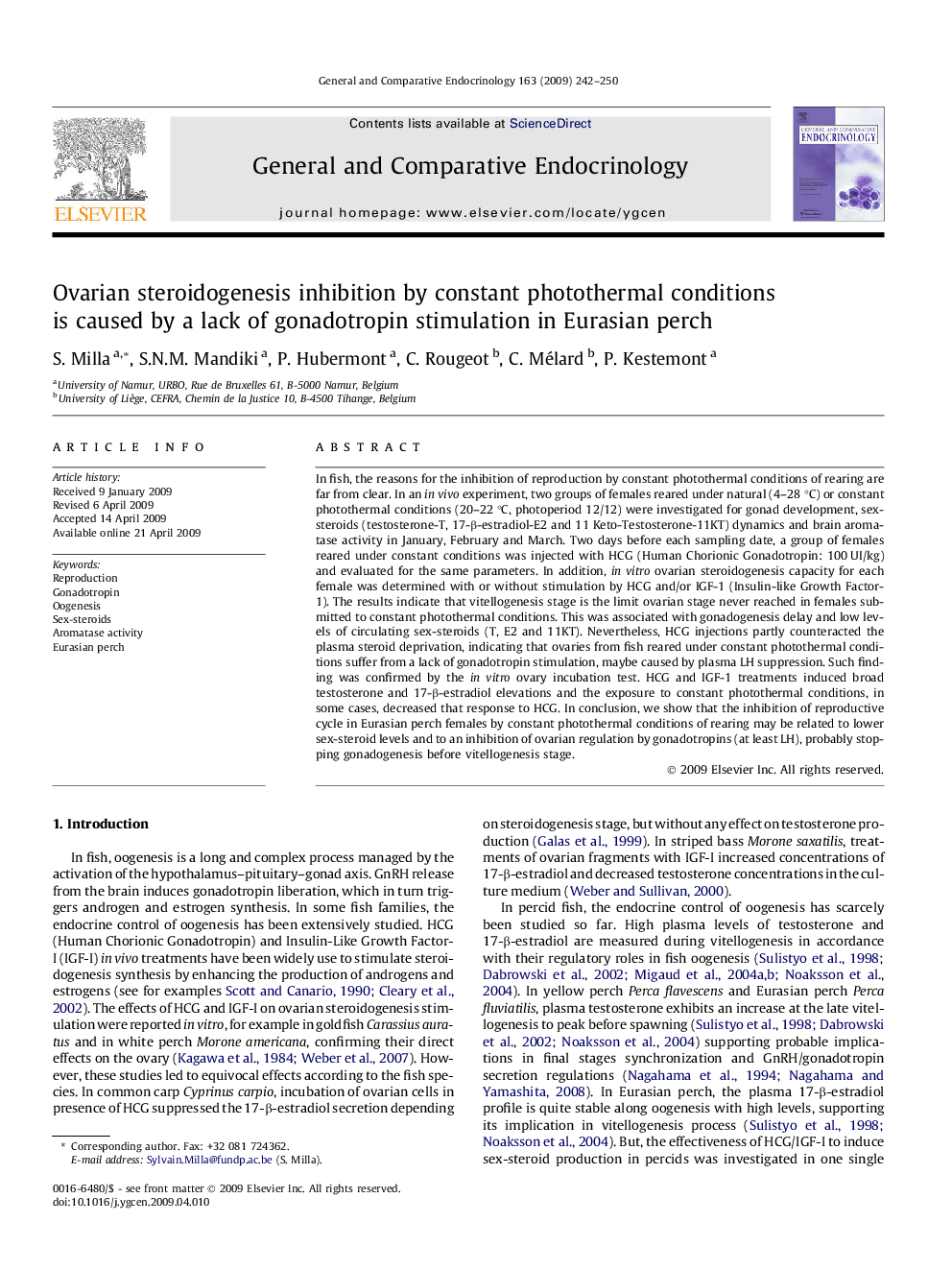| کد مقاله | کد نشریه | سال انتشار | مقاله انگلیسی | نسخه تمام متن |
|---|---|---|---|---|
| 2801323 | 1156154 | 2009 | 9 صفحه PDF | دانلود رایگان |

In fish, the reasons for the inhibition of reproduction by constant photothermal conditions of rearing are far from clear. In an in vivo experiment, two groups of females reared under natural (4–28 °C) or constant photothermal conditions (20–22 °C, photoperiod 12/12) were investigated for gonad development, sex-steroids (testosterone-T, 17-β-estradiol-E2 and 11 Keto-Testosterone-11KT) dynamics and brain aromatase activity in January, February and March. Two days before each sampling date, a group of females reared under constant conditions was injected with HCG (Human Chorionic Gonadotropin: 100 UI/kg) and evaluated for the same parameters. In addition, in vitro ovarian steroidogenesis capacity for each female was determined with or without stimulation by HCG and/or IGF-1 (Insulin-like Growth Factor-1). The results indicate that vitellogenesis stage is the limit ovarian stage never reached in females submitted to constant photothermal conditions. This was associated with gonadogenesis delay and low levels of circulating sex-steroids (T, E2 and 11KT). Nevertheless, HCG injections partly counteracted the plasma steroid deprivation, indicating that ovaries from fish reared under constant photothermal conditions suffer from a lack of gonadotropin stimulation, maybe caused by plasma LH suppression. Such finding was confirmed by the in vitro ovary incubation test. HCG and IGF-1 treatments induced broad testosterone and 17-β-estradiol elevations and the exposure to constant photothermal conditions, in some cases, decreased that response to HCG. In conclusion, we show that the inhibition of reproductive cycle in Eurasian perch females by constant photothermal conditions of rearing may be related to lower sex-steroid levels and to an inhibition of ovarian regulation by gonadotropins (at least LH), probably stopping gonadogenesis before vitellogenesis stage.
Journal: General and Comparative Endocrinology - Volume 163, Issue 3, 15 September 2009, Pages 242–250